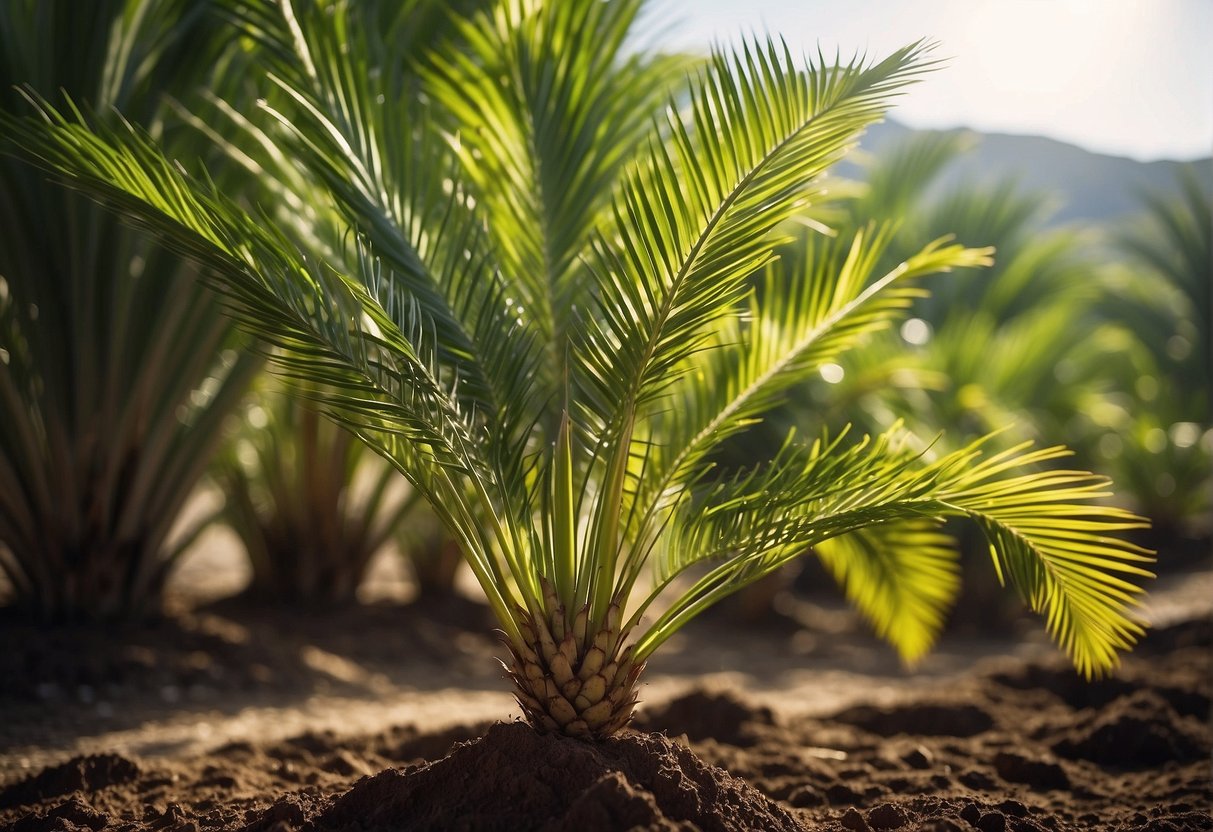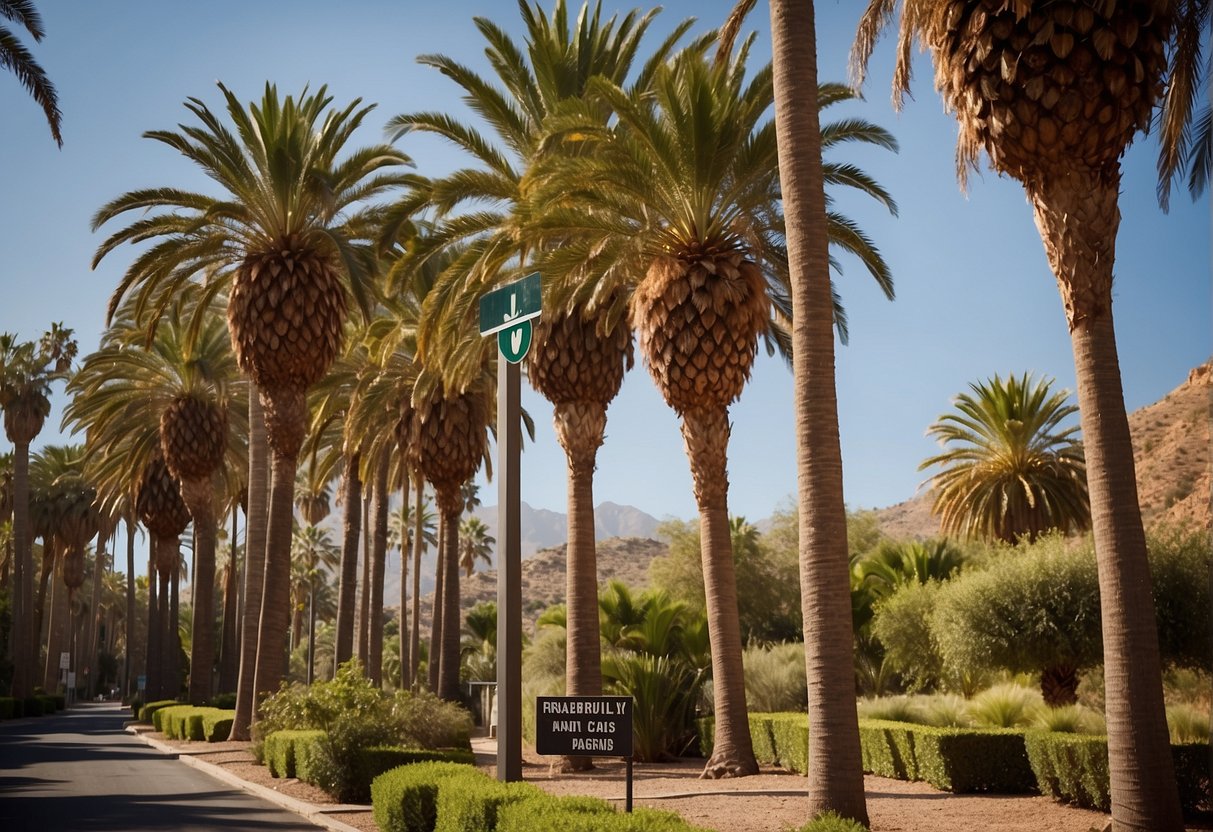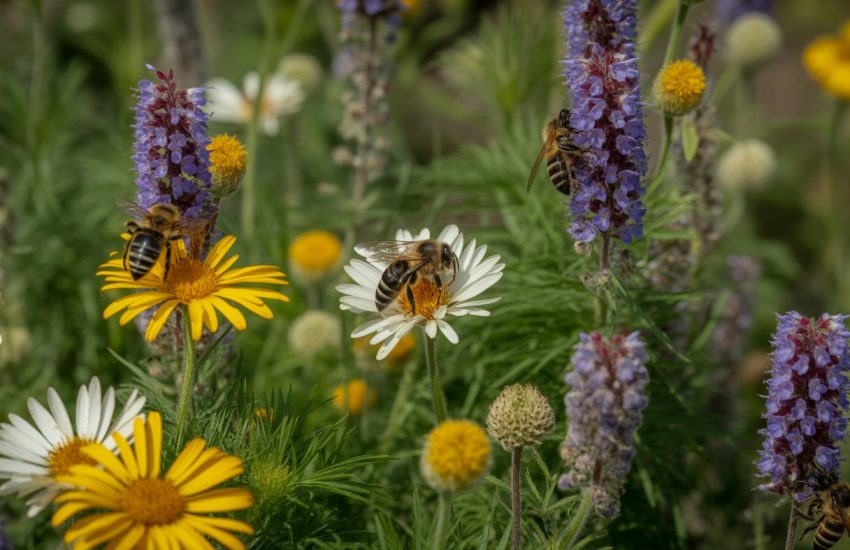Canary Island Date Palms: Characteristics and Care Tips
Canary Island date palms, also known as Phoenix Canariensis, are a popular palm tree species that originate from the Canary Islands. These trees are widely cultivated for their ornamental value and are commonly used in landscaping projects. The Canary Island date palm is a large, slow-growing tree that can reach up to 60 feet in height with a spread of 30 feet.

The Canary Island date palm is known for its unique appearance, featuring a thick trunk with a distinctive diamond-shaped pattern created by the remnants of old leaf bases. The leaves of this palm tree are long and pinnate, with sharp spines along the edges. The fruit of the Canary Island date palm is a small, yellowish-brown drupe that is edible but not typically consumed.
Despite their popularity as ornamental trees, the Canary Island date palm is considered an invasive species in some areas due to its ability to spread rapidly and outcompete native vegetation. However, when properly managed, these trees can provide a stunning addition to any landscape. With their unique appearance and hardy nature, the Canary Island date palm is a beloved species of palm tree that is sure to impress.
Botanical Profile

Species and Scientific Name
The Canary Island Date Palm (Phoenix Canariensis) is a species of palm tree that belongs to the Arecaceae family. It is also known as the Pineapple Palm due to the shape of its fruit.
Origin and Habitat
The Canary Island Date Palm is native to North Africa, specifically the Canary Islands, where it grows in subtropical and Mediterranean climates. It has been introduced to many other parts of the world, including southern California, Florida, and the Mediterranean region.
Physical Characteristics
The Canary Island Date Palm is a large, slow-growing tree that can reach heights of up to 60 feet (18 meters). Its trunk is thick and sturdy, with a diameter of up to 2 feet (0.6 meters). The leaves are long and pinnate, growing up to 18 feet (5.5 meters) in length. The crown of the tree is dense and rounded, with a diameter of up to 40 feet (12 meters). The fruit of the tree is a large, yellow-orange drupe that is about 2 inches (5 cm) in diameter.
Growth
The Canary Island Date Palm is a slow-growing tree that can take up to 10 years to reach maturity. It prefers well-drained soil and full sun exposure. The tree is hardy and can tolerate drought, but it does require regular watering during the growing season. The tree can also be grown in containers, making it a popular choice for indoor and patio landscaping.
Uses
The Canary Island Date Palm is primarily grown for ornamental purposes, due to its attractive appearance and slow growth rate. It is also used in landscaping, as a street tree, and as a specimen tree in parks and gardens. The fruit of the tree is edible, but it is not widely consumed due to its small size and low yield.
Cultivation and Care
Planting and Soil Requirements
Canary Island date palms prefer to be planted in full sun and require good drainage to thrive. They can tolerate a variety of soil types, but prefer well-draining soil with a pH of 6.0 to 8.0. When planting, it is important to dig a hole that is at least twice as wide as the root ball to ensure proper root growth. The hole should also be deep enough so that the top of the root ball is level with the ground. Once planted, the palm should be watered thoroughly and the soil should be mulched to help retain moisture.
Watering and Fertilization
Canary Island date palms are drought tolerant and do not require frequent watering. However, they should be watered deeply and infrequently to promote healthy root growth. During hot and dry weather, they may require additional watering. Fertilization should be done in the spring and fall with a balanced fertilizer. It is also recommended to supplement with iron and magnesium to prevent nutrient deficiencies.
Pruning and Maintenance
Regular pruning and maintenance is important for the health and appearance of the palm. Dead or dying fronds should be removed to prevent the spread of disease and pests. It is also recommended to remove any fruit stalks as they can be heavy and cause damage to the tree. The trunk should be inspected regularly for signs of pests or disease. If any issues are found, they should be addressed promptly to prevent further damage. Overall, proper care and maintenance will ensure a healthy and beautiful Canary Island date palm.
Pest and Disease Management
Canary Island date palms are susceptible to a variety of pests and diseases that can cause significant damage to the tree. Proper management techniques can help to prevent and control these issues.
Common Pests
Mealybugs, thrips, and scale insects are common pests that can infest canary island date palms. Mealybugs are small, white insects that feed on the sap of the tree and can cause yellowing and wilting of the leaves. Thrips are tiny insects that feed on the leaves and can cause discoloration and distortion. Scale insects are small, oval-shaped insects that can cause yellowing and wilting of the leaves.
Diseases and Disorders
Fusarium wilt and ganoderma butt rot are two common diseases that can affect canary island date palms. Fusarium wilt is a fungal disease that can cause yellowing and wilting of the leaves, as well as stunted growth. Ganoderma butt rot is a fungal disease that can cause the trunk of the tree to decay and can eventually lead to the death of the tree.
In addition to pests and diseases, canary island date palms can also suffer from nutrient deficiencies, such as magnesium and potassium deficiencies, which can cause yellowing and wilting of the leaves. Fungal infections can also occur, particularly in areas with high humidity.
Proper management techniques, such as regular pruning, fertilization, and irrigation, can help to prevent and control these issues. It is important to monitor the health of the tree regularly and take action at the first sign of infestation or disease.
Propagation and Growth

Seed Propagation
Canary Island date palms can be propagated through seed sowing. The seeds can be obtained from mature fruits that have been allowed to ripen and fall naturally. It is important to note that the seeds must be planted immediately after collection as they have a short shelf life. The seeds can be sown in well-draining soil and kept moist until germination occurs, which can take up to 6 months. It is recommended to plant several seeds together to increase the chances of germination.
Growth Rate and Maturation
Canary Island date palms are known for their slow growth rate, taking up to 10 years to reach a height of 6-8 feet. However, once established, they can grow up to 2 feet per year. The growth rate can be influenced by factors such as soil quality, water availability, and temperature. The palms can live up to 100 years and can reach a height of 60-70 feet.
New growth on the Canary Island date palm occurs in the spring and summer months. The new leaves emerge from the center of the crown and can be up to 15 feet long. As the palm matures, the leaves become more rigid and form a characteristic arching shape. The palm produces small, cream-colored flowers in the autumn, which are followed by small, black fruits.
Overall, the propagation and growth of Canary Island date palms can be a slow process, but the end result is a majestic and long-lived tree that adds beauty and character to any landscape.
Landscape and Ornamental Use

Canary Island date palms are highly valued for their ornamental appearance and are commonly used in landscaping and gardening. They are versatile trees that can be used in a variety of settings, ranging from public spaces to private gardens.
Gardens and Public Spaces
Canary Island date palms are often used in gardens and public spaces due to their striking appearance and ability to provide shade. These trees can grow up to 60 feet tall and have a crown spread of up to 30 feet, making them a great choice for larger areas. They are also drought tolerant and can thrive in a variety of soil types.
The Royal Horticultural Society has awarded the Canary Island date palm with the Award of Garden Merit, which recognizes plants that are reliable, perform well, and are of good constitution. This accolade highlights the tree’s ability to thrive in various environments and its overall aesthetic appeal.
Containers and Indoor Use
Canary Island date palms can also be grown in containers and used indoors to add a touch of exotic elegance to any space. When grown in containers, it is important to use a loam-based compost and to water the tree moderately. In the winter months, water should be sparingly given the tree’s reduced growth rate during this time.
In warmer climates such as California and Florida, Canary Island date palms are often used as outdoor container plants due to their ability to withstand heat and drought. When used as indoor plants, they can add a tropical feel to any room and are relatively low maintenance.
Overall, Canary Island date palms are a versatile and aesthetically pleasing tree that can be used in a variety of settings. Their striking appearance and ability to thrive in different environments make them a popular choice for gardeners, landscapers, and homeowners alike.
Frequently Asked Questions

What are common issues with Canary Island date palms and how can they be managed?
Canary Island date palms are susceptible to pests and diseases such as the red palm weevil, Fusarium wilt, and diamond scale. These issues can be managed by regularly inspecting the tree for signs of infestation or disease, and promptly treating any problems that are identified. It is also important to ensure that the tree is planted in well-draining soil and provided with adequate water and nutrients.
Are Canary Island date palms toxic to pets or humans?
The fruit of the Canary Island date palm is not toxic to humans, but it can cause digestive upset if consumed in large quantities. However, the seeds of the tree can be toxic to pets and should be kept out of reach. Additionally, the tree’s spiky fronds can cause injury if not handled carefully.
How should one care for and maintain a Canary Island date palm?
Canary Island date palms require regular pruning to remove dead or damaged fronds and promote healthy growth. They also require regular watering and fertilization, particularly during the growing season. It is important to ensure that the tree is planted in a location that provides adequate sunlight and protection from strong winds.
What is the growth rate of Canary Island date palms?
Canary Island date palms are slow-growing trees that typically grow 6-10 inches per year. However, growth rates can vary depending on factors such as soil quality, water availability, and temperature.
How does the root system of a Canary Island date palm affect its planting and location?
Canary Island date palms have a relatively shallow root system that can spread up to 20 feet wide. This can make it difficult to plant the tree near sidewalks, driveways, or other structures. Additionally, the tree’s roots can be invasive and may damage nearby pipes or foundations.
Can the fruit of the Canary Island date palm be consumed safely?
The fruit of the Canary Island date palm is edible and can be consumed safely in moderation. However, it is important to ensure that the fruit is fully ripe before consuming, as unripe fruit can cause digestive upset. It is also important to remove the seed before consuming the fruit, as the seed can be toxic to pets.


